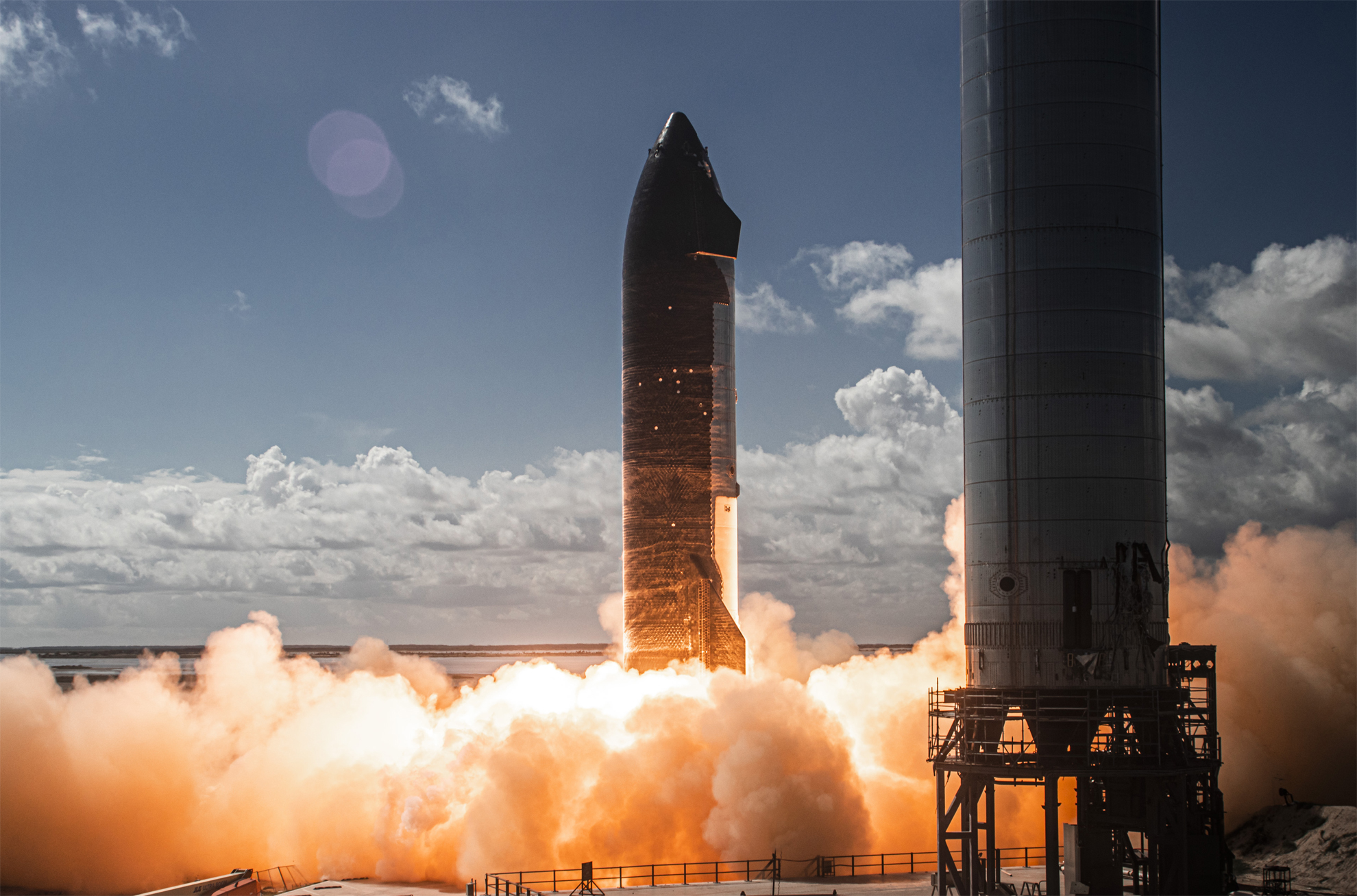
SpaceX should soon have clarity on the orbital launch prospects of its Starship deep-space transportation system.
This summer, the U.S. Federal Aviation Administration (FAA) began an environmental assessment of SpaceX's orbital launch activities at Starbase, the company's facility near the South Texas village of Boca Chica.
SpaceX wants to conduct the first-ever orbital test flight of a Starship vehicle from Starbase soon, but that cannot happen until the FAA review wraps up its review. The timeline for that review had been fairly vague, but on Monday (Nov. 15) the agency posted an estimated completion date: Dec. 31, 2021.
Photos: SpaceX lifts huge Super Heavy rocket onto launch stand
The news seemed to cheer SpaceX founder and CEO Elon Musk, who has been critical of FAA regulations in the past.
"The hard work by FAA, US Fish & Wildlife and Texas Parks & Wildlife is much appreciated, as well as the strong local support from Cameron County and Brownsville/South Padre!" Musk said via Twitter on Monday. (Starbase is located in Cameron County, near the city of Brownsville and South Padre Island.)
The FAA released a draft review of the Starbase assessment on Sept. 17 and asked the public to provide comments about it through Nov. 1. On Monday, the agency announced that it received more than 17,000 written comments about the document during this stretch.
Get the Space.com Newsletter
Breaking space news, the latest updates on rocket launches, skywatching events and more!
The FAA also held two public hearings about the review via Zoom, on Oct. 18 and Oct. 20. The agency received 121 verbal comments during those hearings, FAA officials said on Monday.
SpaceX is developing Starship to take people and cargo to the moon, Mars and other distant destinations. Indeed, NASA astronauts will ride Starship to the lunar surface a few years from now, if all goes according to plan; the agency recently selected Starship as the initial human landing system for its Artemis program of crewed lunar exploration.
Starship consists of two elements, both of which are designed to be fully reusable: a giant first-stage booster called Super Heavy and a 165-foot-tall (50 meters) spacecraft known as Starship. Both will be powered by SpaceX's next-gen Raptor engine, six in Starship's case and about 30 for Super Heavy.
Starship prototypes have flown before, but to a maximum altitude of just 6 miles (10 kilometers) or so. And those flights were made by three-engine vehicles, with no first-stage booster attached. The upcoming orbital test will feature a six-engine Starship prototype known as SN20 and a Super Heavy with 29 Raptors.
The Super Heavy, known as Booster 4, will splash down in the Gulf of Mexico shortly after liftoff. SN20 will make its way to orbit, circling Earth once before splashing down near the Hawaiian island of Kauai, if all goes according to plan.
Mike Wall is the author of "Out There" (Grand Central Publishing, 2018; illustrated by Karl Tate), a book about the search for alien life. Follow him on Twitter @michaeldwall. Follow us on Twitter @Spacedotcom or on Facebook.
Join our Space Forums to keep talking space on the latest missions, night sky and more! And if you have a news tip, correction or comment, let us know at: community@space.com.

Michael Wall is a Senior Space Writer with Space.com and joined the team in 2010. He primarily covers exoplanets, spaceflight and military space, but has been known to dabble in the space art beat. His book about the search for alien life, "Out There," was published on Nov. 13, 2018. Before becoming a science writer, Michael worked as a herpetologist and wildlife biologist. He has a Ph.D. in evolutionary biology from the University of Sydney, Australia, a bachelor's degree from the University of Arizona, and a graduate certificate in science writing from the University of California, Santa Cruz. To find out what his latest project is, you can follow Michael on Twitter.









